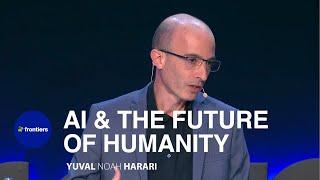????We Have A Patreon!????
https://patreon.com/didyoucatchthis
The 2001 film "A.I. Artificial Intelligence," directed by Steven Spielberg, utilized innovative lighting techniques to enhance its futuristic narrative and emotional depth. Cinematographer Janusz Kamiński's lighting design played a crucial role in creating the film's distinctive look, effectively differentiating between the various worlds and moods within the story. The lighting not only highlighted the advanced technology and sleek environments but also underscored the emotional journeys of the characters, adding layers of meaning to the visual storytelling.
The use of lighting in "A.I. Artificial Intelligence" was particularly effective in establishing the film's contrasting settings. For instance, the sterile, clinical laboratories where David, the child-like robot, is created were bathed in bright, white light, emphasizing the cold, technological precision of these spaces. This stark lighting contrasted sharply with the warm, natural lighting of the Swinton family's home, where David is introduced to human emotions and experiences. The home’s lighting conveyed a sense of warmth and humanity, highlighting David’s longing to be part of a real family. Additionally, the neon-lit, vibrant streets of Rouge City were illuminated with bold, colorful lights, reflecting the chaotic and hedonistic nature of the environment. These varied lighting schemes helped to visually distinguish the film's diverse settings and contributed to the overall atmosphere.
Lighting also played a significant role in conveying the emotional states of the characters. In moments of introspection or emotional intensity, Kamiński used soft, diffused lighting to create an intimate and contemplative mood. For example, the scenes where David dreams of becoming a real boy or searches for the Blue Fairy were often lit with gentle, ethereal light, enhancing the sense of wonder and innocence. Conversely, during scenes of tension or danger, the lighting became harsher and more dramatic, using shadows and high contrast to heighten the sense of urgency and unease. This dynamic use of lighting effectively mirrored the characters’ inner experiences, drawing the audience deeper into the emotional core of the story. Overall, the masterful lighting in "A.I. Artificial Intelligence" not only enhanced the film's visual appeal but also enriched its narrative and emotional resonance.
http://didyoucatchthis.com
https://www.tiktok.com/@didyoucatchthis
https://www.facebook.com/didyoucatchthis
https://www.instagram.com/didyoucatchthistv
https://www.snapchat.com/add/diducatchthis
A.I. Artificial Intelligence | Lighting A.I. | Behind The Scenes
https://youtu.be/jf01BcUIDK0
#behindthescene #behindthescenes #movies #2000s
https://patreon.com/didyoucatchthis
The 2001 film "A.I. Artificial Intelligence," directed by Steven Spielberg, utilized innovative lighting techniques to enhance its futuristic narrative and emotional depth. Cinematographer Janusz Kamiński's lighting design played a crucial role in creating the film's distinctive look, effectively differentiating between the various worlds and moods within the story. The lighting not only highlighted the advanced technology and sleek environments but also underscored the emotional journeys of the characters, adding layers of meaning to the visual storytelling.
The use of lighting in "A.I. Artificial Intelligence" was particularly effective in establishing the film's contrasting settings. For instance, the sterile, clinical laboratories where David, the child-like robot, is created were bathed in bright, white light, emphasizing the cold, technological precision of these spaces. This stark lighting contrasted sharply with the warm, natural lighting of the Swinton family's home, where David is introduced to human emotions and experiences. The home’s lighting conveyed a sense of warmth and humanity, highlighting David’s longing to be part of a real family. Additionally, the neon-lit, vibrant streets of Rouge City were illuminated with bold, colorful lights, reflecting the chaotic and hedonistic nature of the environment. These varied lighting schemes helped to visually distinguish the film's diverse settings and contributed to the overall atmosphere.
Lighting also played a significant role in conveying the emotional states of the characters. In moments of introspection or emotional intensity, Kamiński used soft, diffused lighting to create an intimate and contemplative mood. For example, the scenes where David dreams of becoming a real boy or searches for the Blue Fairy were often lit with gentle, ethereal light, enhancing the sense of wonder and innocence. Conversely, during scenes of tension or danger, the lighting became harsher and more dramatic, using shadows and high contrast to heighten the sense of urgency and unease. This dynamic use of lighting effectively mirrored the characters’ inner experiences, drawing the audience deeper into the emotional core of the story. Overall, the masterful lighting in "A.I. Artificial Intelligence" not only enhanced the film's visual appeal but also enriched its narrative and emotional resonance.
http://didyoucatchthis.com
https://www.tiktok.com/@didyoucatchthis
https://www.facebook.com/didyoucatchthis
https://www.instagram.com/didyoucatchthistv
https://www.snapchat.com/add/diducatchthis
A.I. Artificial Intelligence | Lighting A.I. | Behind The Scenes
https://youtu.be/jf01BcUIDK0
#behindthescene #behindthescenes #movies #2000s
- Category
- Artificial Intelligence












Comments